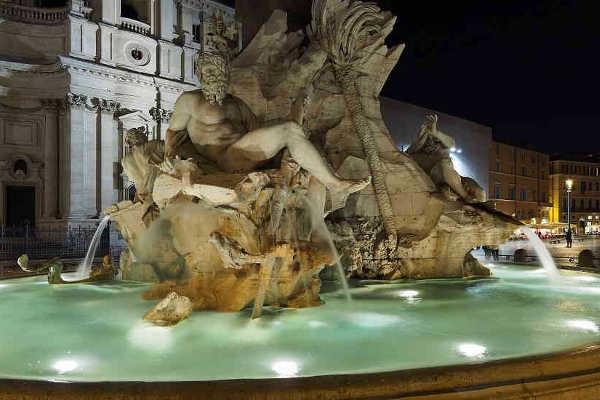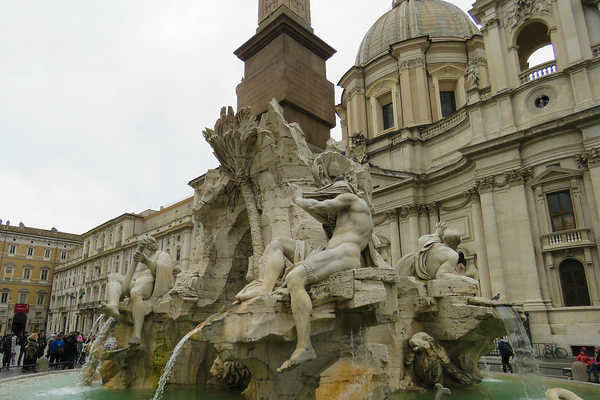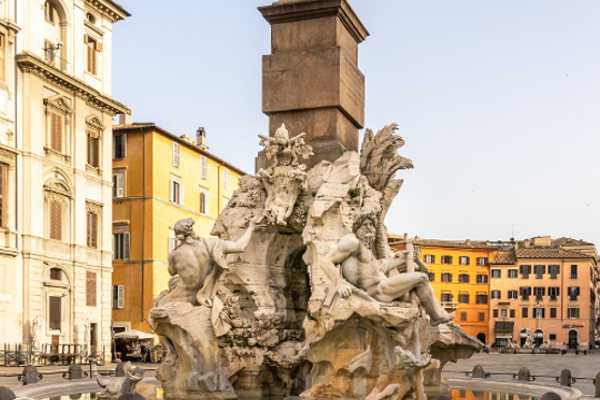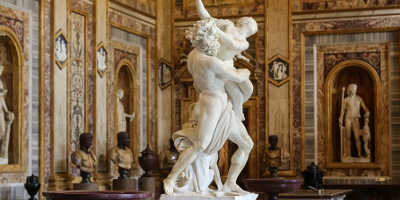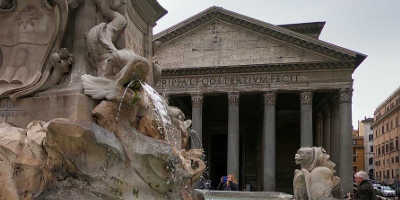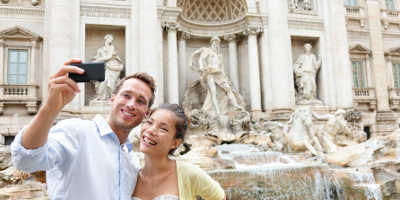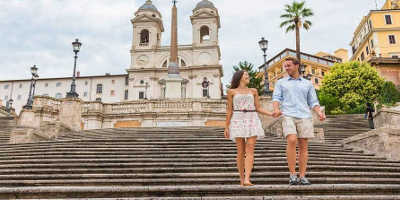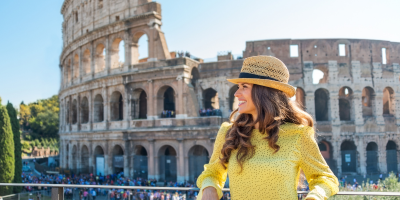Fountain of Four Rivers, Rome
With the endless beauty offered within Rome, some attractions may fall through the cracks on your journey. The Roman’s longstanding relationship with their water is unique and ongoing, given the grandeur of their aqueducts and, above all, their fountains.
The city is scattered with public fountains, offering to extraordinary statues and designs which have no parallel to any other city in the world. One of the best is Bernini’s Fountain of Four Rivers, which is worth the visit during your holiday.
The Making of the Fountain of Four Rivers
Gian Lorenzo Bernini designed the fountain in 1651. It was commissioned by Pope Innocent X, whose family palace, named the Palazzo Pamphili, faced onto the piazza. Initially, the Pope wanted to work with Francesco Borromini, as he had received considerable funding from the previous pope, Urban VIII. However, Bernini created a model of his fountain design, and after seeing the model, the Pope was so delighted he decided to assign the project to Bernini instead of Borromini.
The Design of the Fountain
This fountain was one of Bernini’s most famous artworks in his entire career. His style was an advanced interpretation of subjects, forms, as well as the combination of media. Bernini designed the fountain with four different figures of gods, each representing the world’s four greatest rivers and the continents to which the papal authority had spread. The god holding the oar, is the Ganges in Asia. The river-god here is looking away from the fountain, representing the spiritual ignorance that was perceived in this land by the Catholic church. The statue with the coat of arms in his hand is the Danube in Europe. As the most civilised and cultured of the four lands, the figure is looking towards the fountain and, therefore, the light of the lord. The river god holding the stack of coins represents the Rio de la Plata in South America and appears surprised as though he has just started seeing the light. And lastly, the figure with a cloth over his head symbolises the Nile in Africa. The somewhat blindfolded river-god here has the cloth over his head to show the ignorance of the pagan world. The Catholic church believed this land to be in the dark, having not yet seen the light of Christianity. Surrounding these marble gods are particular wildlife, each representing the four major continents depicted in the fountain. In the middle, there is an obelisk towering over the fountain. An obelisk was said to be a connector between the human world and that of the heavens. On top of the obelisk is a dove that symbolises the Holy Spirit and the Pope that commissioned the fountain. It was originally a part of the Circus of Maxentius, found in the Appian Way Regional Park.
Where to Find the Fountain of Four Rivers
The fountain is nestled in Rome’s popular square, Piazza Navona. The square was built upon the former site of the stadium of Domitian, built by Emperor Domitian, hence the oval shape. The original stadium was built in 86 AD and was used to host festivals and sporting events. In the 15th century, the site was paved over to create the Piazza Navona which you see today. The Fountain of Four Rivers can be found in between the two other fountains in the square.
Other sights near the Fountain of Four Rivers
Bernini’s masterpiece is not the only fountain within Piazza Navona, there are two others. At the southern end is the Fontana del Moro that was created by Giacomo della Porta in 1575. Porta originally created the fountain with the statues of the dolphin and four Tritons but in 1653 Bernini added the sculpture of a Moor to its centre. Interestingly, the original statues from the fountain were moved to the Borghese Gallery in 1874 and the present statues are copies of the originals.
At the northern end is the Fountain of Neptune, also created by Giacomo della Porta in 1574. Whilst Porta designed the basic structure of the fountain, the ornate sculptures built upon it were added almost 300 years later in 1878 by Gregorio Zappalá and Antonio della Bitta. Zappalá created the ‘Nereids and cupids and horses’ which depicts sea monsters, mermaids and cupids playing with dolphins, the energy of which makes it look like they are jumping out of the fountain’s waters. Bitta designed ‘Neptune fighting with an octopus’ which shows the mighty water-god using his trident to battle the sea creature. All of the sculptures were designed to complement the Fontana del Moro and the Fountain of the Four Rivers.
Sat beside the glorious fountains of the piazza is Sant’Agnese in Agone, a 17th-century baroque church. This building dominates the western side of the square and is a beautiful sight to see. Inside, the walls are covered in pink and white marble with intricate carvings and fluted columns. The dome overhead is lined with windows, which illuminate the stunning painting that coats the inside of the dome. The church itself is dedicated to Saint Agnes who was martyred here at the age of 12 or 13. Her skull can still be viewed in one of the rooms of the church and has been analysed by scientists to determine that she died around 303 AD.
The Fountain of the Four Rivers and its surrounding fountains and buildings are impressive to behold. Walk around the fountain and spot the intricate details of the structure. Enjoy the shops and the surrounding markets at the square and take in the sounds of the bustling city life bouncing off the tranquil flow of trickling water.

